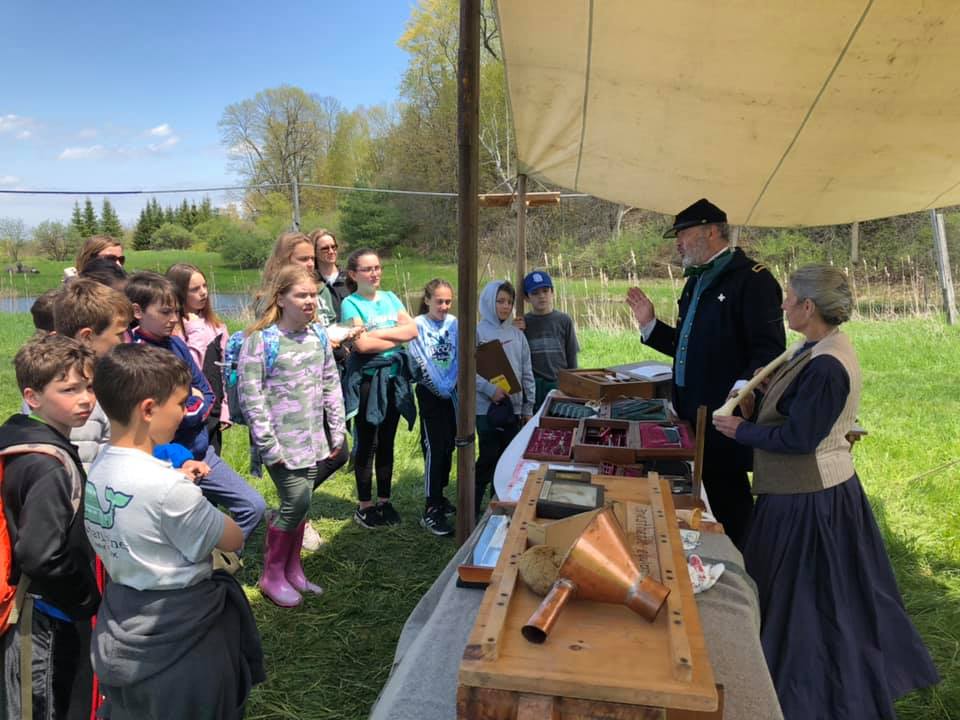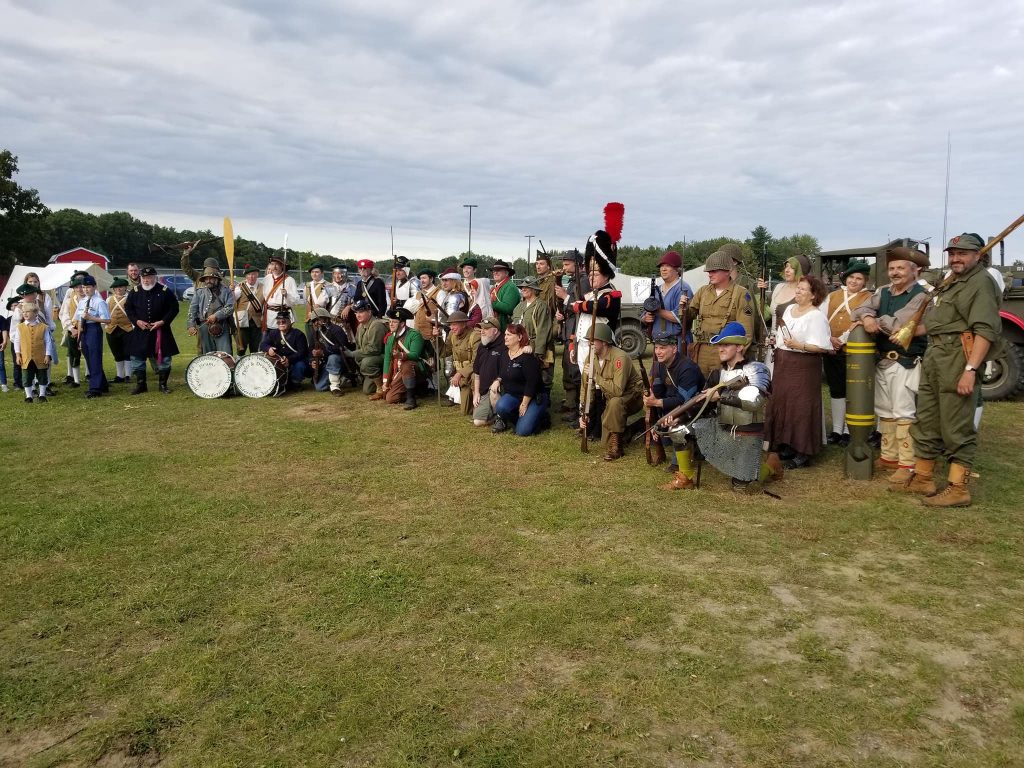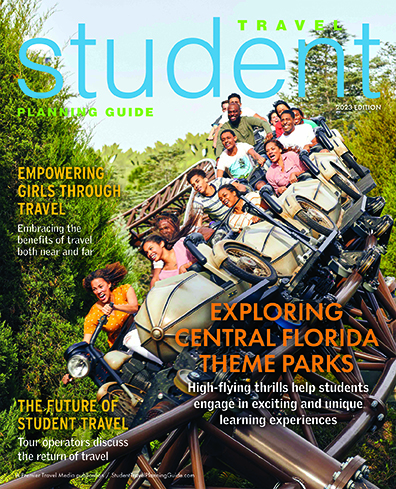Students glimpse the foundations of America with offers of historical reenactments and centuries of immersive history. There are museums, farms, houses and boats restored and rebuilt from the landing of the Mayflower to the Civil War that students can explore.
In a place filled with American foundations and history, New England is a wonderful place to explore interactive history that challenges students to experience the past. In these excursions from museums and forts to farms and fields, kids can discover how people lived and survived without modern technologies.

Fort Western Reenactors (Credit)
Fort Western – Augusta, Maine
This village is steeped in 18th century life through historic landmarks, stores, houses and tenements. Educators have several program options including a three-century timeline of local history, the events leading up to the Seven Years’ War, Benedict Arnold’s march through Maine, life in 18th Century Maine and history interpretation. Students can learn and experience historical daily living with oral history, documents and materials from that time period.
Washburn Norlands – Livermore, Maine
This living history center covers the 19th century in varied programs that range from 90 minutes to 24 hours with many different experiences to learn aspects of history. These programs include historical games, farming and history of the Washburn Family. The 24 hour live-in experience includes all of these activities along with overnight accommodations. These tours guide students through history as they leave behind technology for life on the farm.

Students learn about textiles (Credit)
The Fort at No. 4 – Charleston, New Hampshire
This reconstructed village was once the northwesternmost British colony and teaches a combined cultural history with colonists and Native Americans. For students there are self-guided and education tours that include material culture, history lessons, food growth, clothing, blacksmithing, indigenous materials, historical currency, religion, education and games of the 18th century. Students explore the life of colonists and participants of the French & Indian War at this historic fort.
Strawbery Banke Museum – Portsmouth, New Hampshire
This campus of history includes buildings, interactive exhibits and gardens for school, scout or homeschool programs. Groups can enjoy a range of historical learning activities from architecture, cooking and archeology to colonial economy, maritime history and immigration. Kids can enjoy a scavenger hunt, compare their daily lives to colonial living and discover the historic houses restored in this village.

Students at Champlain Valley Educational Day (Credit)
Civil War Education Day and Encampment – Shelburne, Vermont
Discover the Champlain Valley historical reenactors as they demonstrate artillery and musket firing, cavalry, soldiers’ food, drilling, marching and a recruiting station. Student groups are immersed in the Civil War as they explore this camp holding Union and Confederate soldiers in period dress. Stations of activities allow kids to try a drill formation, view horseback demonstrations, learn how female soldiers disguised themselves and comprehend how soldiers lived during the war.

Vermont Living History Expo (Credit)
Living History Expo – Essex Junction, Vermont
This premier event of living history combines reenactment groups across time including medieval times, the French and Indian War, the American Revolution, the War of 1812, the American Civil War, World War I and World War II. These also include vendors, historical collectors and veterans in a kid-friendly environment to pass along the history of battles around the world.

Boston Tea Party Reenactment at Night (Credit)
Boston Tea Party Ship – Boston, Massachusetts
Inject your school trip with excitement as students participate in a reenactment of the Boston Tea Party. Led by Samuel Adams and the Sons and Daughters of Liberty, the rebel group meets before their takeover of the ship. Students throw the crowns tea into the harbor, explore the ship that holds historical artifacts and remembrances from the American Revolution, then view an educational film. This two-hour experience allows students to see how Boston became the spark of the revolution.
Plimoth Plantation – Plymouth, Massachusetts
Students studying history can explore the lives of pilgrims and native Wampanoags in this recreation of the famous Plymouth Colony. There is a museum with a self-guided tour and tailored tours for groups. Learning topics on early gardens, period cookery, colonial religion, Native American culture, timber-frame construction and navigation. Groups can also book historic dining experiences as kids eat like those from the 17th century. This plantation holds many historic activities in a comprehensive look at pilgrim and native life.

Keeler Tavern & Museum Classroom Lesson (Credit)
Keeler Tavern – Ridgefield, Connecticut
This 18th century building is a history center with a museum, gardens and education programs on Civil War history. Programs for students are led by school docents ranging from 45 minutes to four hours. These interactive adventures take on historical events such as the Battle of Ridgefield, the Gilded Age in Ridgefield, arts and historiography. Students can interact with reenactors and documents to glean the day-to-day activities of those alive during the Civil War.

Charles W. Morgan Restoration at Mystic Seaport (Credit)
Mystic Seaport – Mystic, Connecticut
In the largest maritime museum in the United States, students can explore a 19th century seaside village with many historic buildings. In the primary source workshop, students work to make an exhibit from the museum’s collection. There is a homeschool program offered for living in a 19th century coastal town. The ship to shore overnight program is a unique enterprise to demonstrate living on a ship in 1882. With such a wide range of activities, Mystic Seaport offers plenty of ways to explore history.
Watson Farm – Jamestown, Rhode Island
This coastal farmland was established first in 1789 and has stayed in the Watson family for five generations. There is a self-guided walking tour along with an outdoor workshop. Students can see the process of farmers continuing a long-standing tradition of producing lamb and wool blankets sold at local markets. From historical land to farming techniques, these pastures offer a historical experience in farming.






